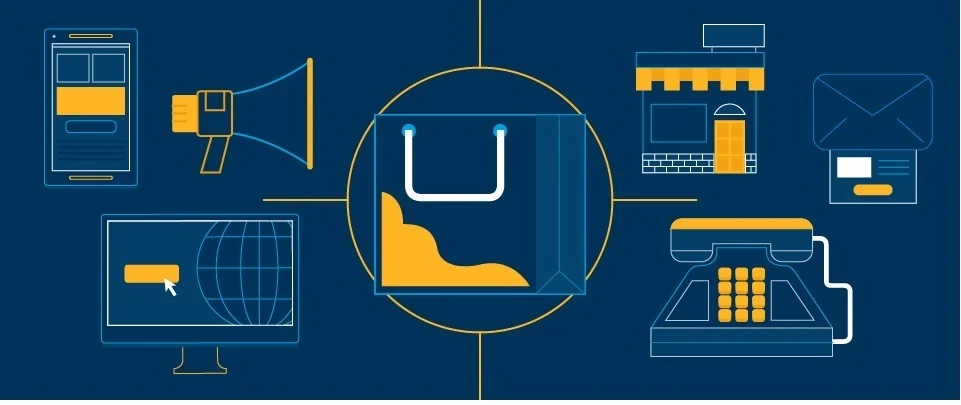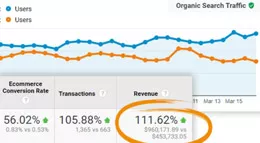Omnichannel Remarketing Strategies That Convert
Remarketing is an effective way to sell to customers who have already visited your website. While retargeting is used to drop cookies on shoppers and market to anyone who’s seen your website, remarketing strategies are used to reach out to customers deeper in the sales funnel – typically through email. For the sake of clarity, we’ll use the term remarketing to discuss strategies that bring customers back to your website to complete their purchases.
Let’s explore a few omnichannel remarketing strategies you can use for your eCommerce business and why they’re effective at winning shoppers back.

Why Remarketing Is Effective
Remarketing taps into customers who are already familiar with your brand and at least somewhat interested in what you have to sell. There are many reasons why your customers didn’t convert the first time; however, the chances that they return and buy from your brand are still high – especially if they added items to their cart and then abandoned it.
Remarketing is particularly useful to eCommerce merchants during the holiday season. There’s increased pressure to stand out amongst the thousands of ads and messages shoppers see. A customer who visited your website once in early November might not remember the name or products they found a few weeks later. Remarketing allows your brand to remind customers what they liked about your products and bring them back to complete the purchase.
Google recently shared a case study from eCommerce tire retailer Tirendo. By implementing remarketing strategies in Google Ads, Tirendo increased its sales through paid ad campaigns by 22%. Additionally, the company noticed a 161% conversion rate increase compared to normal ad campaigns and a 43% drop in their cost per acquisition.
For Tirendo, remarketing is effective because customers are already interested in engaging with the brand through paid search. Remarketing keeps their brand top-of-mind during the research process, meaning more customers click on their paid ad again and convert. Conversions increase because fewer prospects are lost, increasing the ROI of the brand.
5 Remarketing Strategies That Convert
The remarketing campaigns you develop will vary by your budget, branding and business. You can use all of these omnichannel tactics or just a few. As you build your remarketing strategies, be sure to set target metrics and goals that determine whether your investment is worth the time and budget you allocate.
Invest in Display Ads Across the Web
Display ads that utilize remarketing consistently outperform traditional display media. According to Invespcro, the average display click-thru rate (CTR) is 0.07%. However, the CTR for remarketing ads is 0.7%. While this CTR may seem low, remember that the conversion rate is high. Customers who click on a remarketing display ad are 70% more likely to convert on a retailer’s website.
If you already have a display strategy to target top-funnel and mid-funnel customers, consider adding a remarketing element to close the deal. At the very least, you can allocate part of the budget to test the ads and see how they perform against each other.
Use Social Media to Connect With Customers
Fifty-four percent of marketers think social media is the best opportunity to remarket to customers. Not only do 75% of customers notice retargeted ads compared to other non-remarketed content, but they also drive more engagement and sales.
Connect.io reports that retargeted ads can lead to a 1046% increase in branded search terms. This proves the omnichannel nature of remarketing. Customers see a remarketed ad on Facebook while they’re scrolling, search for the website later and complete their purchase. A low CTR for social display ads doesn’t necessarily mean they aren’t driving sales for your brand.
Tap Into Google’s Ideas for Ad Remarketing
If you want to invest in remarketing for your paid search campaigns in hopes of seeing similar results as Tirendo, you don’t have to reinvent the wheel. It’s in Google’s best interest for your RLSAs (remarketing lists for search ads) to succeed to encourage you to spend more with their ad platform.
Google developed 19 strategies for increasing your audience reach and improving conversions. This is a good place to start if you plan to boost your PPC remarketing efforts.
Send Pop-Up Notifications in Your App
Finally, if you have an app for your eCommerce brand where customers can enable push notifications, reach out to your customers if they bounce before they convert. A simple push notification after 20-60 minutes of inactivity can bring the attention back to your website.
These notifications also highlight the omnichannel nature of remarketing. You can trigger one push notification after a few minutes and then send a follow-up email after a few hours of inaction. Your customers engage with your brand on both channels before returning to complete a purchase.
You don’t have to invest in display ads or develop an app to remarket to your customers. Each brand can build its own remarketing strategies to succeed in an increasingly omnichannel world.
Expand Your Reach With the Experts at OuterBox
Want to concentrate on your core business and leave the heavy lifting for an experienced team of eMarketers? Say the word, and we’ll provide personalized guidance to help boost your eCommerce growth.

